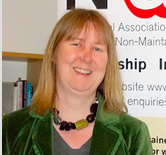
Claire Dorer
When the Labour party conference voted to abolish independent schools there was a ripple of anxiety and confusion across the families of the 20,000 children and young people with Education Health and Care Plans (EHCP) whose special educational needs (SEN) are supported in independent school provision. The question, ‘do they mean us?’ or even, ‘do they know we exist?’ was asked over and over on social media. To date, the answer is uncertain!
My association supports over 300 independent special schools across England and Wales. There are also a further 200 small children’s homes providing education for children with SEN, who are also required to register as independent schools. We didn’t recognise the assertions being made about independent schools – that they allow those parents who can afford it to ‘buy’ social advantage and contribute little to building social justice.
Over 95 per cent of placements in independent special schools are funded through the public purse, with local authorities covering placement fees. Our schools cater for children and young people with the most complex needs – most of who have not had these needs met in other provisions. Our 2017 survey of over 300 parents indicated that for over 70 per cent their child’s current independent special school placement was at least their third school. For 20 per cent it was at least their fifth school.
In some ways, there are parallels to mainstream independent provision – use of independent special schools reflects lowered confidence in state provision and a lowered capacity to meet the needs of all children. The percentage of children with SEN who are supported in mainstream schools has decreased over the past 5 years. Children with SEN are over-represented in fixed-term and permanent exclusions and more likely to be subject to practices such as ‘off-rolling’. Overall, the education system is struggling to manage complexity. This pushes demand for state special school places and, as these schools fill and overfill, independent special schools are often chosen as a ‘placement of last resort”.
Whilst the numbers of children with SEN placed in independent special schools is increasing, the proportion of children with EHCPs that the sector caters for actually decreased slightly between 2018-19 to 6.1 per cent in independent schools and 1.3 per cent in non-maintained special schools (a specific category of independent special school). However, as these children present the greatest complexity of needs, they also tend to be those whose school placements cost the most. Spend on the sector has increased since 2014. This is largely accounted for by increased numbers of placements but it still causes tension for local authorities with stretched and overspent High Needs Block funding. There’s not always a good understanding of what services go into fees and whether or not these are comparable to the offers from other schools. As schools, we’re not always as good as we could be at showing what each element of a service costs and what it contributes, particularly where we use high levels of therapeutic input.
As a sector, we have wide range of types of school ownership from small to national charities and from individual proprietors to commercially operated groups. For just over half of our membership, operational profit is a possibility and another source of tension when independent schools are discussed. Some are uncomfortable with the idea of anyone profiting from the provision of services to children. We have yet to see this discomfort translated into more sophisticated debate about whether there is evidence that links type of school ownership to cost of placements, the efficiency of operations and the outcomes achieved for children.
We also lack evidence on the rate of ‘profit’ in the sector and what happens to it. When charities make a surplus, it is reinvested into the charity – we know this is the case in some commercial organisations, so at what point and in what circumstances does the notion of profit per-se become problematic?
The independent special school sector does not see itself as immune to any level of reform or scrutiny but we would like to think ourselves worthy of a stay of execution! Unlike most mainstream independent schools, our special schools are regional or even national resources. On average, our schools work with around eighteen different local authorities and one member works with 85! Setting aside moral arguments, it is hard to see, in practical terms, how our schools could be reabsorbed into the state system. They would likely require some sort of national or regional ownership and management, which would in turn risk the destruction of the existing connection between a school and the placing local authority to which the child ‘belongs’. It seems a lot of work for little gain – even at a political level.
What we’d like to see is our schools evolving to take on a greater support role for a wider range of children with SEN, not just those on the school roll. We are investing in projects that will take special schools’ expertise into mainstream settings so that children with SEN won’t be excluded simply because their needs are not understood and supported. We always expect to have to show our value but we want to be seen and acknowledged for what we do and for what makes us a special case for consideration when it comes to reform.
Claire Dorer is the CEO of the National Association of Independent Schools and Non-Maintained Special Schools (NASS). NASS is a membership body for special schools, which are not in local authority control. It represents over 300 schools to national stakeholders such as the Department for Education and Ofsted and works with the sector to develop and share good practice.



